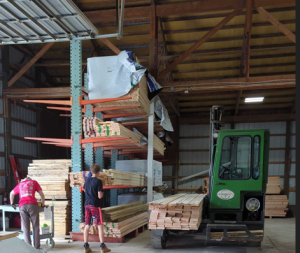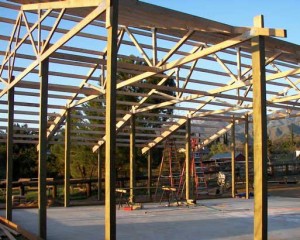I Woodn’t Use It (pun intended)
For those of you who are unfamiliar with LVLs (Laminated Veneer Lumber) here is a good primer:
https://www.hansenpolebuildings.com/blog/2013/01/lvl/
For the thousands of my regular daily readers, you know Justine well – she is the one who makes sure all of the good stuff arrives at client’s jobsites when they are supposed to, and in the condition intended.
 Just the other day she forwards me a photo of what appears to be an LVL which spent too much time on the beach with me in Ecuador. In lumber terms, “It is sunburned”. As Justine asked me, “Black Lumber”?
Just the other day she forwards me a photo of what appears to be an LVL which spent too much time on the beach with me in Ecuador. In lumber terms, “It is sunburned”. As Justine asked me, “Black Lumber”?
I was able to find (courtesy of https://www.internationalbeams.com) the correct storage procedures for LVLs:
- LVL should be protected from the weather and stored lying flat.
- Product must not be stored in contact with the ground.
- Store LVL in wrapped bundles, provide air circulation and support
bundles with 2×4 stickers. - On the job site, protect from the weather both before and after
installation. LVL is intended for use in covered, dry conditions only. - Do not install wet or visually damaged product.
I will admit it was really difficult to find “expert” opinions on whether to use this LVL or not. Is it still structurally sound? So I thought I would share a few “less than expert” opinions I found on various message boards on the ‘net:
“I would pay close attention to the layers to make sure they are still holding tight. LVL beams are GLUED together, if enough moisture gets in there the glue could start peeling apart making the beam considerably weaker. I wouldn’t take my chances unless I knew it never got wet.”
“I would have to see it, but if there is no rot or mold growing on the beam, I would still use them. Few months outside just seasons the wood.”
And my favorite (this is pretty scientific, so hold on):
“If the LVL got wet enough to swell up and then they dried out and show any sign of delamination, they lose a lot of strength. I tested this, they break much easier. If they just weathered, they should be ok. If you have a new piece of LVL, Cut a test piece, drive a car or tractor over it to see what it takes to break it. Do the same test with a weathered piece.”
My advice to Justine was, “I would ask the supplier to either replace it, or to provide a letter from the company which manufactured it, to confirm it is adequate to be used structurally.”







